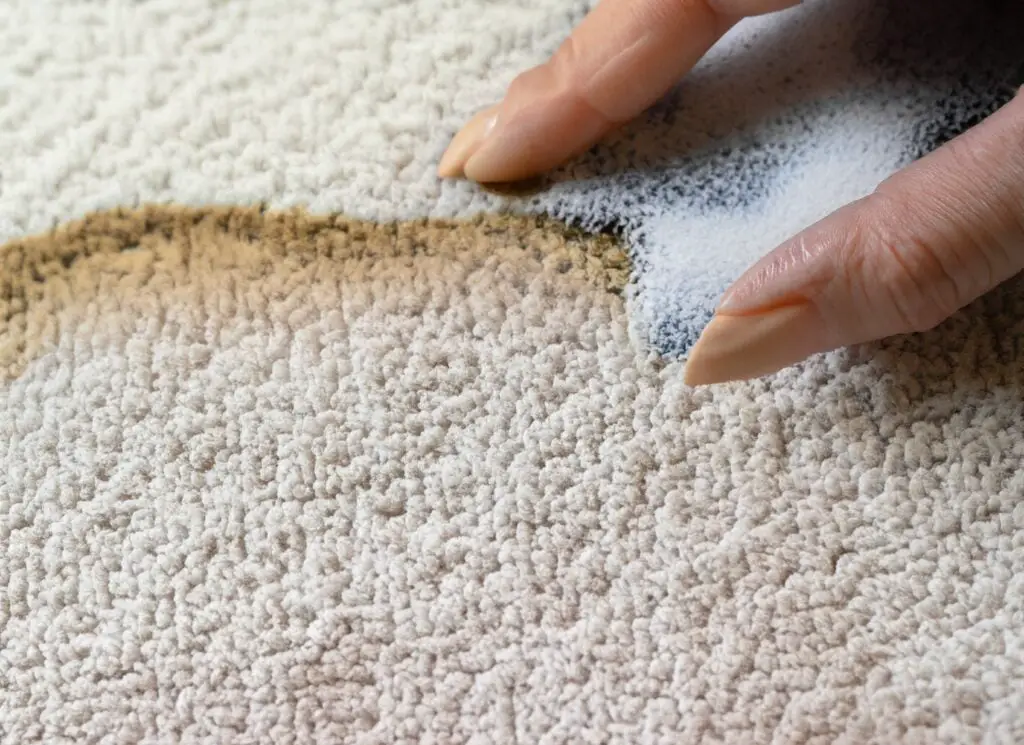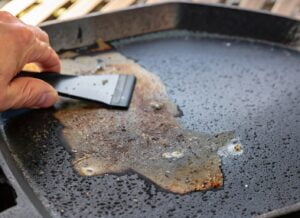Struggling with how to get oil out of carpet?
If you’ve ever spilled olive oil while cooking or tracked motor oil into your living room, you know how stubborn these stains can be. The clock is ticking, and that stain isn’t getting any lighter on its own.
Good news: You can effectively remove oil stains from your carpet, and it doesn’t have to be a Herculean task.
If you’re tired of Googling “how to get oil out of carpet baking soda” or “remove oil from carpet WD-40,” then you’re in the right place. As an expert in carpet cleaning and stain removal techniques, I’ll guide you through the most effective oil stain removal methods for your carpet. Whether you’re dealing with cooking oil or motor oil, this blog post will be your go-to guide for all things related to oil stains and carpet maintenance.
Key Facts:
(Source: Expert Team Research)
- Oil stains can be challenging to remove from carpets as they tend to spread and adhere to the fibers.
- Baking soda, cornstarch, and baby powder are effective absorbents for oil stains.
- Professional carpet cleaners have shared secrets for effectively removing oil stains from carpets.
- Videos and tutorials provide visual guidance on how to remove oil stains from carpets effectively.
- People commonly search for methods to remove specific types of oil stains, such as olive oil, engine oil, and black oil, from carpets.
How to Get Oil Out of Carpet: A Step-by-Step Guide

Preparing for the Cleanup
First things first, you’ll need to gather essential cleaning supplies like baking soda, a utility brush, and a vacuum. The sooner you act, the easier it will be to remove the stain.
Tip: Keep a cleaning caddy with all these essentials so you’re always prepared for any spills or stains.
Safety Precautions
Before diving in, make sure you’re wearing gloves and a mask. Also, ensure the room is well-ventilated, especially if you’re using any chemical deodorizers or dry cleaning solvents.
Initial Steps for Fresh Oil Stains
The first step is blotting the stain with a white cloth. Always work from the edges to the center to prevent the stain from spreading.
Why Blotting is Crucial
Blotting is essential because it prevents the stain from spreading. The science behind it is simple: absorption. The cloth absorbs the oil, making it easier to remove later.
Key Takeaway: Always opt for blotting over rubbing to prevent the stain from setting in.
Using Absorbent Powders
Sprinkle baking soda, cornstarch, or baby powder onto the stain. These powders are excellent for absorbing oil.
How Long to Let the Powder Sit
Let the powder sit for about 15 minutes. You’ll know it’s ready for removal when it forms clumps, indicating that it has absorbed the oil.
Vacuuming the Powder
Use a vacuum with a brush attachment to remove the powder. Make sure to vacuum thoroughly to get all the powder out of the carpet fibers.
Tip: A handheld vacuum works best for this task as it allows for more precise control.
Testing Cleaning Solutions
Before applying any cleaning solution, perform a patch test. Mix a small amount of dishwashing liquid with water and apply it to an inconspicuous area.
What to Do If the Cleaning Solution Fails the Test
If the cleaning solution damages the carpet, consider using alternative solutions like white vinegar or even soda water. If all else fails, it might be time to consult professionals.
Applying the Cleaning Solution
Apply the cleaning solution to the stain and blot it dry. Remember, blotting is key here.
Repeating the Process
If the stain persists, repeat the process. You’ll know you’ve succeeded when the stain is no longer visible.
Key Takeaway: Patience is key. Some stubborn stains may require multiple treatments.
Special Cases: Different Types of Oil Stains
Cooking Oil Stains
For cooking oil stains like olive or coconut oil, consider using a dry cleaning solvent as these oils are often more stubborn.
Motor Oil Stains
Motor oil is a whole different beast. You’ll need a specialized removal technique, often involving a stronger cleaning agent like rubbing alcohol.
Essential Oil Stains
Essential oils can be tricky due to their concentrated nature. A combination of baking soda and white vinegar often works best here.
Professional Cleaning Services: When to Call the Experts
If the stain is too stubborn or your carpet is expensive or vintage, it’s time to call in the professionals.
Cost-Benefit Analysis
Weigh the costs of DIY vs professional services. Sometimes, calling in the experts can save your carpet in the long run.
Key Takeaway: Don’t hesitate to seek professional assistance for expensive or vintage carpets.
Additional Tips and Tricks
For fresh stains, cold water and blotting can often do the trick. For older or set-in stains, consider using commercial carpet stain removers containing enzymes that break down oil molecules for easier removal.
FAQs About How to Get Oil Out of Carpet
What is the fastest way to get oil out of carpet?
The fastest way is to blot the stain with a white cloth and then apply baking soda or cornstarch to absorb the oil.
What draws oil out of carpet?
Absorbent powders like baking soda, cornstarch, and baby powder are effective in drawing oil out of carpet.
Will Dawn take grease out of carpet?
Yes, Dawn dishwashing liquid is effective in removing grease stains when mixed with warm water.
Summary
In summary, knowing how to get oil out of carpet involves a few key steps: blotting the stain, using absorbent powders, and applying the right cleaning solutions. If you’ve been struggling with stubborn oil stains, this guide should help you tackle them effectively. So, are you ready to give your carpet a new lease on life?





